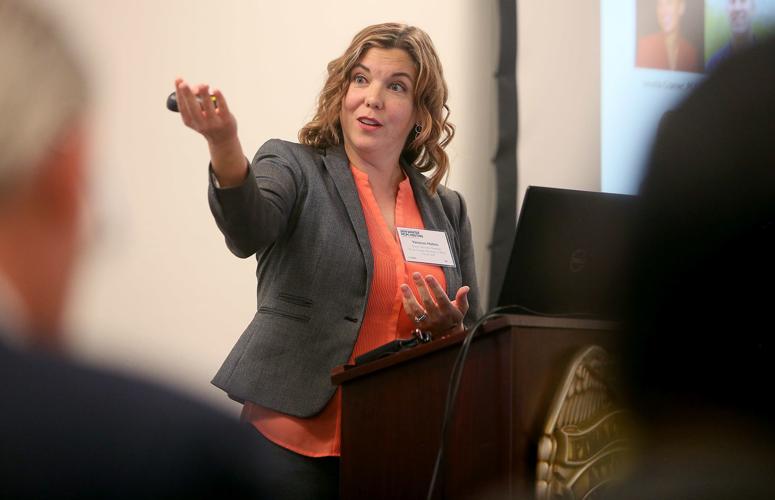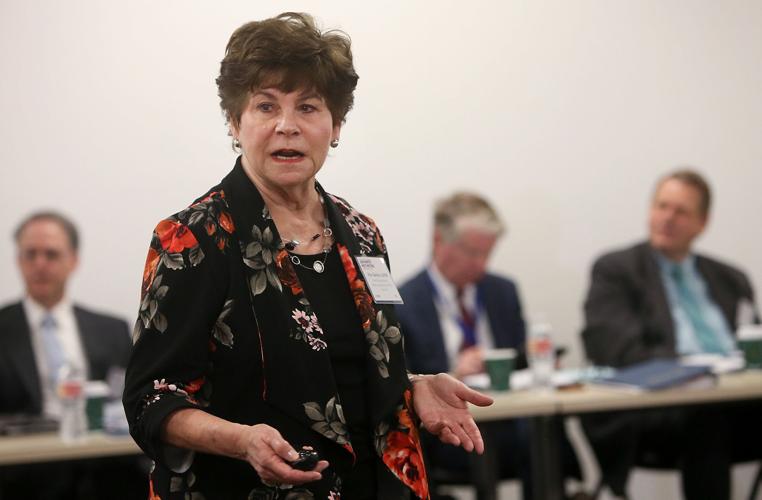Local efforts designed to protect victims of domestic violence and programs that keep drug offenders out of jail could soon gain traction across the country.
The programming developed in УлшжжБВЅ was touted during a meeting of more than 20 district and county attorneys from across the U.S. to discuss strategies to assist in criminal-justice reform on a local level.
Attendees at the Association of Prosecuting Attorneyтs Major County Prosecutorтs Council winter meeting included elected and appointed officials from jurisdictions that include Baltimore, New York City, Detroit, Seattle and Denver.
The council, which is made up of prosecuting attorneys from the 35 most populated jurisdictions in the U.S., meets twice a year to discuss and identify model protocols that can be implemented in other large counties and cities.
People are also reading…
тI want to add to my portfolio of programs that are sustainable ... do justice and serve the community,т Daniel Satterberg, district attorney of King County, Washington, said during opening remarks. тThatтs the essence of criminal justice reform.т
Satterberg said that several years ago, he sent employees from his office to Pima County to get ideas on how to fix an issue within his countyтs juvenile courts.
Using a model based on Pima Countyтs restorative justice work with juvenile offenders, Satterberg implemented the Family Intervention Restorative Services in King County, turning part of a juvenile detention center into a respite center and providing immediate services to families that were previously unavailable until the trial process was completed.
On Thursday morning, representatives from the Pima County Attorneyтs Office and other local agencies highlighted several programs and procedures that attendees could attempt to replicate in their offices.
One such program is the countywide domestic violence protocol thatтs been implemented and improved upon over the past several years. The protocol is a collaboration between all seven local law enforcement agencies, local prosecutors, Victims Services and the Emerge Center Against Domestic Abuse.
One of the key tools of the protocol is the lethality screening form, which police officers fill out with the victim and attach to a defendantтs court file for a judge to consider when deciding on conditions of release.
When the form was first implemented, some т but not all т judges were using the form. Pima County Attorney Barbara LaWall lobbied legislators, requesting a law that requires a judge to consider the form. In 2015, УлшжжБВЅ Revised Statute 13-2967 went into effect.
The task force took it a step further, developing a form that could be used as a statewide assessment to identify risk to victims and assess the trajectory of that risk, said Vanessa Helms, victim services director for the Pima County Attorneyтs Office.
In December 2017, the УлшжжБВЅ Supreme Court adopted the lethality assessment form as the accepted risk assessment and it is now utilized across the state.
Also unique to Pima County is the intensive engagement of Victims Services and Emerge to help ensure victims have the information and resources needed to get help, whenever they decide theyтre ready to leave an abusive situation.
With the victimтs consent, the lethality assessment is sent to Emerge, so caseworkers can follow up and give victims information about available services.
тThis is really critical in the protocol, because a lot of victims in the moment will decline services,т said Anna Harper-Guerrero, executive vice president of Emerge. тA good number of people will call us back later. Without the protocol, these are people who might not have known services were available.т
Another effort highlighted was LaWallтs programming designed to keep drug users out of prison, with Director of Specialty Court Initiatives Kate Lawson presenting information on the officeтs Drug Treatment Alternative to Prison program, which has been in place since 2011 and allows people who would otherwise be sentenced to prison to enter an intensive program consisting of supervision, treatment and support.
A 2017 cost-benefit study by the University of УлшжжБВЅ found that the program has saved УлшжжБВЅ taxpayers $6 million over four years and participation costs less than half of sending a person to prison.
Representatives from the Pima County Attorneyтs Office also noted one of its newer drug alternative programs, the year-old felony drug diversion program, which was formed to address УлшжжБВЅтs unique law that mandates treatment and probation for a personтs first two drug convictions.
While the prison-avoidance program is funded largely through grants, the diversion program is funded by state appropriations to pay for staff and Medicaid covers the treatment costs for defendants.
While many of the questions from attendees focused on funding sources, prosecutors seemed eager to take the ideas home with them, asking for copies of the lethality assessment forms used by police and victim services advocates and additional information about the drug programs.
Like most county and district attorney offices, Pima County struggles with a lack of federal and state funding, except in the form of grants.
тWe have skinny resources but weтve been very inventive and very innovative,т LaWall said.






























